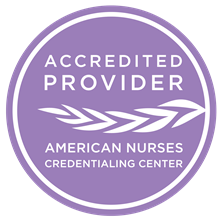You’ve successfully completed the CLNC® Certification Program. You’ve done everything right, such as taking action every day to get your first attorney-client as a new Certified Legal Nurse Consultant. Your efforts have paid off and you’ve got your first case. Now what?
First, you’ll probably do the victory dance. Next comes the panic – “What did I get myself into?”
I guarantee you will recover from the panic when you get moving on the case. All you have to do is take action with these top 19 strategic measures and you’ll make your first case a success.
- Identify a summary of the case, date of incident and the key issues from the attorney’s perspective. Take strong notes. If the attorney wants you to focus on three issues, focusing on ten is not necessarily better. Likewise, if an issue is significant you will want to point it out to your attorney-client.
- Confirm you’re qualified to consult on the case. If yes, determine your CLNC role up front. Will you be the consulting expert or the testifying expert? Because of discoverability rules you must know your role before you begin work on the case. You don’t want that exemplary report you wrote to get scooped up by the opposing attorney because you thought you were the consulting expert, while all along, the attorney knew you were the perfect expert witness. If you’re not qualified, establish that you will work with a CLNC subcontractor.
- Establish the attorney’s level of expertise in handling this type of case. This will help you define the level of legal nurse work product the attorney needs. Attorneys come in different shapes and sizes and their learning needs are quite varied.
- Ask the attorney for any case themes, positions or strategies that have been developed to stay in alignment. You might need to professionally guide the attorney in the right direction to a stronger theme and position when necessary.
- Collaborate with the attorney regarding the specific services you will provide as the legal nurse consultant. For medical malpractice cases emphasize that you will address adherences to and deviations from the standards of care as they apply to the case, as well as causation issues.
- Advise the attorney of the variety of ways you can help as the Certified Legal Nurse Consultant (e.g. attend DME/IME, prepare deposition questions, etc.). But remember, attorney approval and strong communication are essential any time you recommend additional CLNC services you believe will benefit the case.
- Clarify whether the attorney wants a verbal opinion or written report and, if written, brief, moderate or comprehensive.
- Communicate your fee. Agree on a working budget. It will be influenced by the depth and breadth of the case, the attorney’s learning needs and personal preferences, as well as the attorney’s comfort level with you as the legal nurse consultant.
- Make sure you have collected a retainer and a signed contract or letter agreement before you start working on the case.
- Determine deadlines and plan to meet or beat them. Likewise, don’t submit the work product too early – some of your best ideas occur when you’ve laid the case aside.
- Obtain the relevant records and documents from the attorney. Perform an audit of what you’ve received. Organize each provider record to determine their completeness. Communicate additional records needed and/or missing records to the attorney.
- Plan to check in with your attorney-client via phone or email. As you’re analyzing the case, you may have questions. Group those questions together and then communicate with the attorney when you’ve completed your initial review of the case. Discuss any problems that you encounter. Don’t assume the attorney has even looked at the records. Alternatively, if early in your review you realize you do not have sufficient information to come to a conclusion, then stop what you are doing and communicate the issue.
- Get in the right mindset to analyze the case and write the report. This means different things for different people. Examples include:
- Cleaning your desk and office space to eliminate distractions.
- Creating the environment that helps you focus, such as turning off social media and TV and replacing that noise with silence or quiet music.
- Screen the case, using the Institute’s Screening Form. Review every page of the medical records and other documents provided to you. You never know where you will discover the golden nugget, and no matter how organized records may appear, the important things are often not where you expect to find them.
- Set a plan to develop a report if requested and write it down. How will you approach the case? Do you have to start at the very earliest admission/time frame? Or is it more effective to dive in where the action happened and alleged injury occurred? Whatever you choose, stay focused, organized, relevant and efficient. Do not become distracted by insignificant facts.
- Keep your written report focused and concise. Always proofread and spell check the report before submitting it to the attorney. Assess to ensure the report is clear, concise and consistent throughout.
- Once you’ve submitted the work product, set a meeting to discuss the facts of the case and review your report and analysis carefully with the attorney. You want to make sure the attorney understands all the nuances in a way that can be translated to the jury. You are the educator to the attorney, and you want assurance that the attorney has what is needed to accurately educate the client, opposing counsel, judge and jury. The more you educate and ensure the attorney understands the concepts involved, the more likely the attorney is able to develop a strong position in the case.
- Obtain the attorney’s feedback to ensure the attorney’s needs were met. Express appreciation and ask for the next case. Ask if the attorney has any colleagues to whom your CLNC services could be beneficial and follow up with the new attorney-prospects. This might also be the perfect time to request a Letter of Recommendation.
- Track and invoice for your time. Be specific and accountable.
Employ these 19 strategic measures on your first case (or your 100th) as a Certified Legal Nurse Consultant to confidently and effectively deliver your opinions and reports. Thanks to Suzanne Arragg, RN, BSN, CDONA/LTC, CLNC, Dale Barnes, RN, MSN, PhN, CLNC, Marcia Bell, RN, BSN, CAPA, CLNC, Dorene Goldstein, RNC, BSN, CLNC, Robert Malaer, RN, MSN, FN-CSp., SANE, CNLCP, CALM, CLNC, Michelle Neal, RN, BSN, CLNC and Patrick Stonich, RN, BSN, BS, CLNC for sharing the 19 strategic measures.
Success Is Yours,
P.S. Comment and share the strategic measures a new CLNC consultant should take when they receive their first case.








